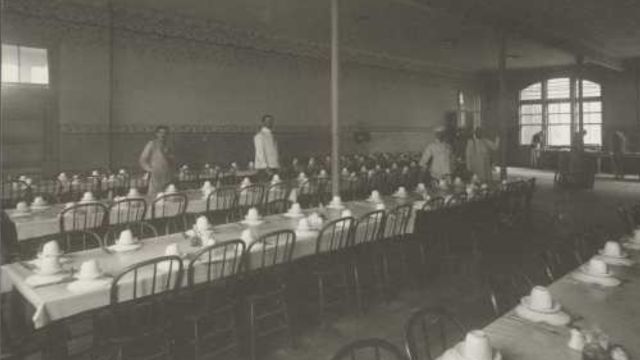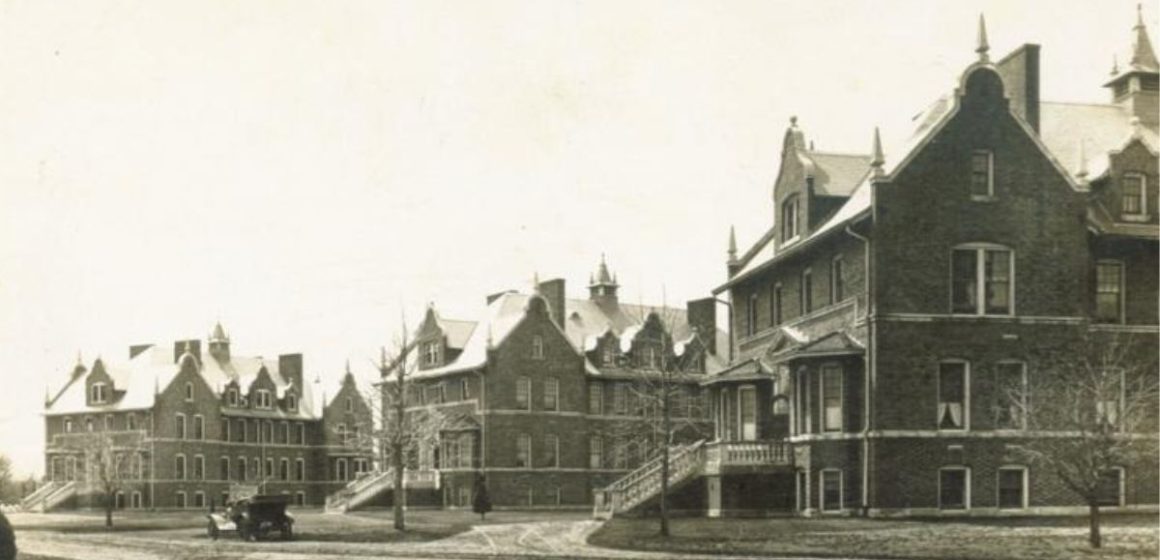Tucked down in the heart of Minnesota, Anoka State Hospital is a historic institution with a colorful and enigmatic past. There are rumors that the ghosts of the thousands of patients who formerly called this former mental hospital home are still here.
Come explore the spooky stories and mysterious happenings that have elevated Anoka State Hospital to the status of one of Minnesota’s most notorious haunted locations.
Anoka State Hospital & Asylum’s past
The first patients arrived at the Anoka State Hospital in the spring of 1900, after it was constructed in the late 1800s.
Approximately 100 male patients who were deemed “chronic incurables” were among the first group of patients to arrive from St. Peter. The patients were just moved here to pass away peacefully; they were not to receive any medical care.
The living arrangements were excellent at first; it was the first mental health facility to house patients in “cottages” as opposed to a hospital-style structure. There were several tunnels beneath the houses, which could accommodate up to fifty patients apiece.
Then, in 1905, 115 women moved in, naturally living in separate dwellings. Everyone could still fit in, and the staff could handle caring for the patients. Then things started to change.
The peak of devotion was reached in the 1920s. For almost any reason and indefinitely, family members could commit other family members!
The most detrimental aspect? Only a family member could come pick up the patient in order for them to be released.
More than a thousand patients were enrolled in the Anoka State Hospital, formerly known as the Anoka State Asylum, by the 1920s. The hospital was overflowing, and the staff was unable to cope.
Despite the institution closing more than 20 years ago, people claim to regularly find restraints on the grounds.
The cemetery of Anoka State Hospital
In anticipation of future needs, the Anoka State Hospital Cemetery was constructed close by when the Anoka State Hospital was constructed. The cemetery is located across the street from Anoka High School, about a quarter of a mile from the main grounds.
About 400 patients are interred here. Do you recall the initial 100 St. Peter patients who were transferred? Here are the graves of 86 of those men.
There’s a terrible past to the cemetery. Patients were buried at the facility with only their number on a plaque while it was in operation. Individuals were unmarked, forgotten, and powerless to escape.
Thankfully, someone assembled a team and investigated the tombs. To aid in the patients’ last resting places, the group was able to erect named headstones in lieu of the patient numbers.

Anoka State Asylum hauntings
Employees have shared many stories. Orbs were observed flying close to the cemetery and the surrounding woods prior to the cemetery being updated with the patient’s names.
Workers inside the cottages report hearing crazy laughter in the hallways and feeling chilly on hot days. Reports have also surfaced of faces visible through boarded-up windows. Workers frequently express the feeling that they are intruding.
There is a connection between this river and the first person buried in the cemetery. German immigrant William Raesall, forty-two, broke out of the asylum five months after it opened.
To his demise, he ventured into the Rum River. It is said in several stories that he committed suicide, but it is simply impossible to tell for sure.
There are more patients whose lives ended in the Rum River besides Mr. Raesall.
Numerous people managed to escape the asylum each year, with many of them ending up along the river. Tragically, a large number of them perished in the Rum River’s raging waves as well. People claim to be able to hear and see screaming coming from the river.
Read Also: Ghosts and Gravestones: Explore 5 Chillingly Haunted Cemeteries
Tunnels beneath Anoka State Hospital
However, the hospital’s underground system is the most haunted area. Patients who attempted to flee had two options: either use the tunnel system or the grounds, which offered very little cover from which to hide, and head toward the Rum River. People tended to choose the tunnels.
Even sane patients were unable to discover a way out. They would eventually give up after becoming disoriented in the endless network of tunnels.
Workers that venture inside these tunnels typically whisper incoherently and erratically, often in a panic. A chill runs down the arms of the employees as cold spots travel through the passageways. Occasionally, a wild chuckle may pour out of the walls.
Additionally, workers hear footsteps approaching them, pausing, and then quickly moving away. Like a patient who’s lost and attempting to navigate their surroundings.
The majority of workers and locals object to going inside the tunnels. These days, security and maintenance personnel usually use them. The public cannot access the tunnels.
Read Also: Ghostly Encounters at Casa Monica: St. Augustine’s Most Haunted Hotel
Present Situation
The number of patients at Anoka State Hospital decreased from about 1300 to approximately 400 during the 1970s. And the decline in numbers persisted.
1999 saw the closure of the facility. The city thought about renovating it and making use of the stunning architecture in the 2000s.
The Anoka State Hospital serves several purposes now. After renovation, a few of the cottages are now used as homeless veteran housing. Human services and treatment offices, as well as adult and teen mental health clinics, occupy a few more cottages.
There are still some under-construction buildings and abandoned cottages.
Please show consideration if you visit the asylum grounds. Here, people work and live. Do not enter the abandoned structures without permission as they are dangerous.
You can communicate with the spirits outside the buildings; believe me, the closer you come to the building, the more different it will seem. The public can easily reach the cemetery.
Treatments for Lobotomies and Tuberculosis at Anoka State Hospital
What stirred things up in the Anoka State Asylum was the years 1948–1967. The hospital was converted into a tuberculosis treatment facility for the mad and mentally sick.
However, the hospital was already overcapacity. The conditions worsened as the personnel struggled to keep up with the incoming group of patients.
Lobotomies were performed in the Anoka State Hospital in the 1950s. In ten years, they performed 100 lobotomies, not just one or two. And those are only the ones that have been publicized.
There were other experimental treatments being used besides lobotomies. Regular treatments included hydrotherapy and electroshock therapy.



Leave a Reply